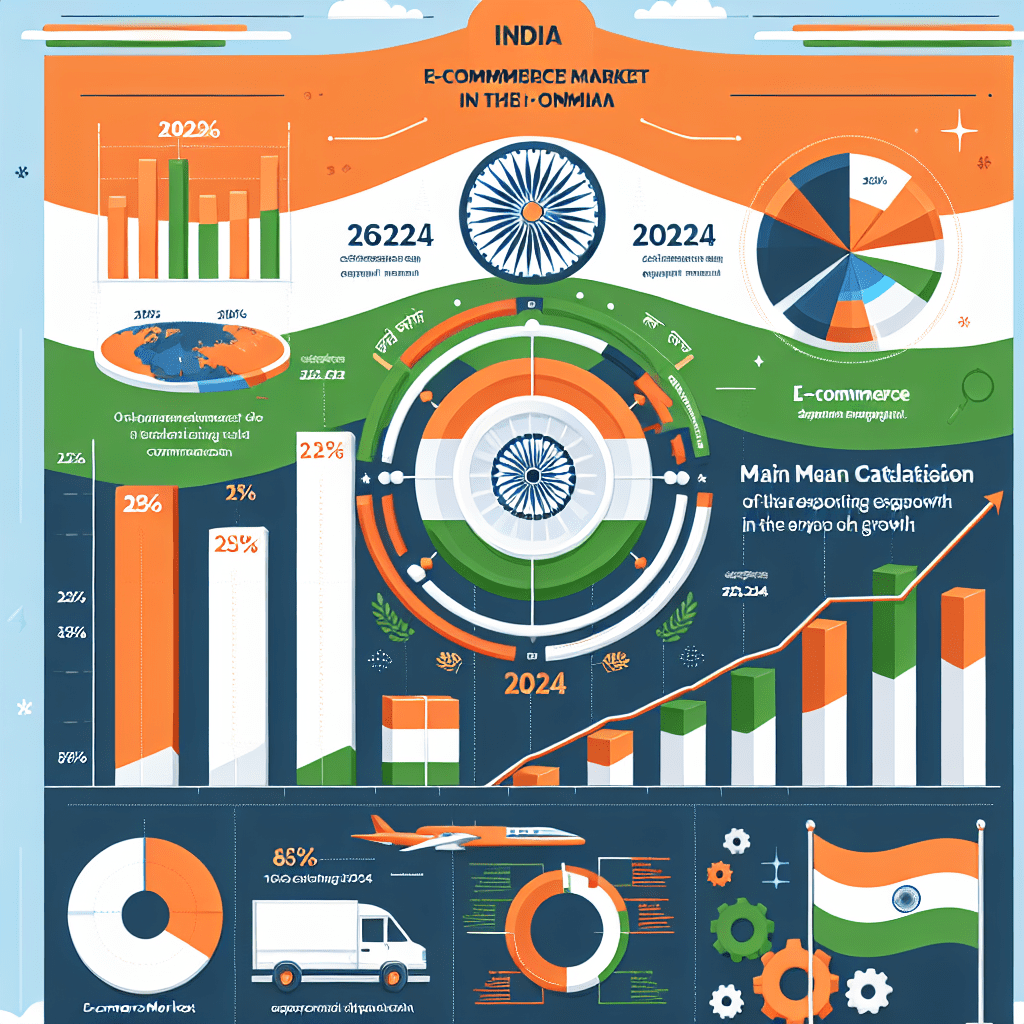Table of Contents
In the vibrant and rapidly evolving landscape of global e-commerce, India stands out as a beacon of immense potential. With a burgeoning middle class, rising internet penetration, and a tech-savvy population, India’s e-commerce market is on the cusp of an unprecedented surge. As we look ahead to 2024, it is crucial for businesses to understand the dynamics at play and devise strategies to navigate this exciting terrain.
The $200 Billion Opportunity
According to a recent report by Bain & Company, India’s e-commerce industry is projected to reach a staggering $200 billion by 2024. This represents a compound annual growth rate (CAGR) of over 30%, making India one of the fastest-growing e-commerce markets in the world. The confluence of factors driving this growth is nothing short of remarkable.

The Rise of the Indian Middle Class
At the heart of India’s e-commerce boom lies the ascent of its middle class. With rising disposable incomes and a growing appetite for convenience and variety, this demographic is fueling the demand for online shopping. Boston Consulting Group estimates that by 2025, India will have over 850 million internet users, with the majority belonging to the middle class.
Smartphone Penetration and Affordable Data
The proliferation of affordable smartphones and the availability of low-cost mobile data have been game-changers for India’s e-commerce landscape. As more Indians gain access to the internet through their smartphones, the barriers to online shopping are rapidly diminishing. The ease of browsing, comparing prices, and making purchases on mobile devices has revolutionized the way Indians shop.
Navigating the E-commerce Landscape
To thrive in India’s dynamic e-commerce market, businesses must adopt a multifaceted approach that encompasses data analytics, customer-centricity, and localization.
Harnessing the Power of Analytics
Data analytics lies at the core of successful e-commerce strategies. By leveraging advanced analytics tools, businesses can gain deep insights into customer behavior, preferences, and purchasing patterns. This data-driven approach enables personalized recommendations, targeted marketing campaigns, and optimized inventory management.

Customer-Centric Approach
In a market as diverse and complex as India, a one-size-fits-all approach is bound to fall short. Businesses must prioritize customer-centricity by understanding the unique needs, aspirations, and pain points of Indian consumers. This involves investing in robust customer support, streamlined returns and refunds processes, and personalized engagement across multiple touchpoints.
Localization is Key
India’s linguistic and cultural diversity presents both challenges and opportunities for e-commerce players. To resonate with consumers across different regions, businesses must adapt their strategies to local preferences. This includes offering vernacular language support, tailoring product assortments to regional tastes, and leveraging local influencers and content creators to build brand trust and authenticity.
The Rise of Social Commerce
Social media platforms have emerged as powerful catalysts for e-commerce growth in India. With over 400 million active social media users, India presents a vast audience for businesses to engage with. The rise of social commerce, where consumers discover and purchase products directly through social media, is reshaping the e-commerce landscape.

Influencer Marketing
Influencer marketing has gained immense traction in India, with social media influencers wielding significant sway over consumer purchase decisions. By partnering with relevant influencers, businesses can tap into their engaged follower base and drive authentic brand engagement. From product reviews to sponsored content, influencer collaborations have become an integral part of e-commerce marketing strategies.
WhatsApp Commerce
WhatsApp, with its 400 million user base in India, has emerged as a game-changer in the social commerce space. Businesses are leveraging WhatsApp’s reach and popularity to engage with customers, provide personalized recommendations, and even facilitate transactions directly within the app. The seamless integration of commerce and conversation on WhatsApp is opening up new avenues for businesses to connect with consumers on a more intimate level.
Embracing Innovation and Technology
To stay ahead of the curve in India’s dynamic e-commerce landscape, businesses must embrace innovation and harness the power of cutting-edge technologies.
Artificial Intelligence and Machine Learning
Artificial Intelligence (AI) and Machine Learning (ML) are transforming the e-commerce industry by enabling intelligent automation, personalized recommendations, and enhanced customer experiences. From chatbots that provide instant customer support to AI-powered product search and discovery, these technologies are driving efficiency and personalization at scale.
Augmented Reality and Virtual Try-Ons
Augmented Reality (AR) is bridging the gap between online and offline shopping experiences. By integrating AR technology into e-commerce platforms, businesses can offer virtual try-ons, allowing customers to visualize how products would look on them. From virtual makeup trials to furniture placement simulations, AR is enhancing customer confidence and reducing return rates.

The Road Ahead
As India’s e-commerce industry continues its upward trajectory, businesses that adapt and innovate will be well-positioned to capitalize on the immense opportunities that lie ahead. By leveraging data analytics, embracing customer-centricity, and harnessing the power of social commerce and emerging technologies, businesses can navigate the complexities of the Indian market and emerge as winners in this exciting space.
As Kunal Bahl, co-founder and CEO of Snapdeal, aptly put it, “E-commerce in India is not just about buying and selling online; it’s about transforming the way businesses operate and customers experience commerce.”
The e-commerce surge in India is not just a fleeting trend; it is a fundamental shift in the way consumers interact with brands and make purchase decisions. By staying attuned to the evolving needs and preferences of Indian consumers, and by continuously innovating and adapting, businesses can ride the wave of India’s e-commerce growth and unlock the vast potential that this market holds.